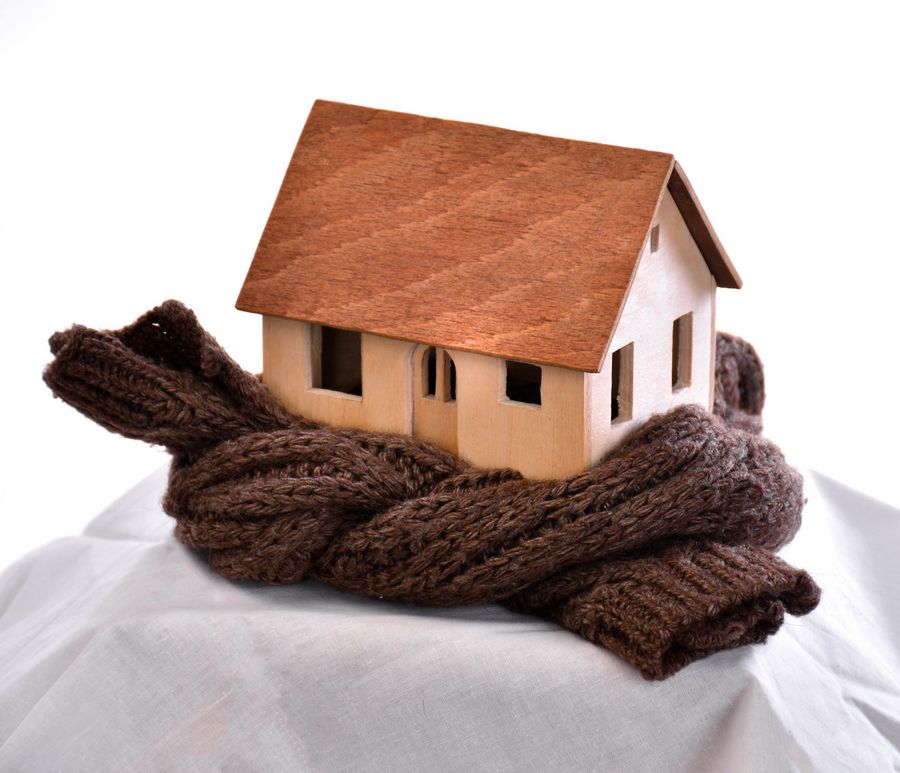Last Updated on January 26, 2023 by teamobn

The majority of homeowners are aware that heating and cooling systems are the biggest energy drains of any home, especially during summers and winters.
The winter season is especially problematic because your heating systems and their functionality become a matter of survival rather than comfort. Unlike in the summer when there are several options for using your cooling systems, the winter affords far fewer alternatives. Fortunately, there are several ways that you can still be energy-efficient during the winter; here are a few examples.
Contents
- 1 Make Proper Use of Your Curtains
- 2 Cover Any Air Leaks and Drafts
- 3 Wear Warm Clothes and Blankets
- 4 Adjust Your Water Heater Settings
- 5 Use Your Ceiling Fans
- 6 Make Use of Portable Space Heaters for Small Rooms
- 7 Invest in a Smart Thermostat
- 8 Install and Maintain Your House Insulation
- 9 Keep Your Air Vents Free From Obstruction
Make Proper Use of Your Curtains
Curtains can also help control the temperature of a room depending on the time of day. Opening your curtains during the daytime allows sunlight into your room, which helps warm your room. Inversely, closing your curtains at night will help keep out the cold. While this measure may not seem to have a significant impact on its own, it’s important to understand that each energy-saving measure will add up to keep temperatures at comfortable levels.
Cover Any Air Leaks and Drafts
Sealing your home from any air leaks and drafts is inexpensive, and the cost to do so will eventually pay for itself in terms of annual energy savings. Some common parts that could be the source of air leaks and drafts are doors, windows, attics, and basements. You may even need to check your roof for any damage after bad weather.
Air leaks and drafts will not only allow heat to escape from your house, but they can also cause cold air to enter your house, which will decrease the effectiveness of your heating systems, and force you to increase the workload of your heating system to maintain the temperature.

Wear Warm Clothes and Blankets
It’s much easier to warm your body than to warm your house. Simply lower the workload of your thermostat and compensate for the reduced heat by wearing a thick sweater and warm socks. According to a report from the Department of Energy, homeowners can save up to 10% on their energy bill just by lowering the thermostat temperature by seven to 10 degrees Fahrenheit for eight hours daily.
Adjust Your Water Heater Settings
Your water heater is another system that consumes a lot of unnecessary energy. In fact, water heaters are the second-highest source of energy consumption in the average home. Water heaters need a lot of energy to maintain water temperature, and most times, they have to do so 24/7. Even a simple measure as setting your water heater to maintain a temperature a few degrees lower will help shave off a few dollars from your energy bills. You can even consider shutting off your water heater, or lowering the temperature even further when you sleep or leave your home. It may take a short while for the water to heat back up to your preferred temperature, but an extra few minutes of waiting can significantly reduce your electric bill.
Use Your Ceiling Fans
While ceiling fans are usually used extensively during the summer to help keep rooms cool, they can also be used to keep rooms warm during the winter. During summer, ceiling fans cool rooms by rotating counterclockwise, which forces air down, producing a cooling effect in the room. Most ceiling fans also have a reverse switch, which causes them to turn clockwise. This creates an updraft of warm air, which causes warm air to circulate throughout the room.
Make Use of Portable Space Heaters for Small Rooms
Portable space heaters are ideal for small spaces that you only spend a short span of time in such as garages and bathrooms. Space heaters are efficient for small rooms because they do not lose heat through ducts and through combustion like their larger counterparts. However, it should be noted that space heaters are inefficient at heating larger areas. You’d be far better off with a gas furnace or a heat pump to warm the larger rooms of your home.

Invest in a Smart Thermostat
A smart thermostat is a Wi-Fi-enabled device that is able to adjust temperature settings based on your habits and preferences. A smart thermostat can automatically lower the temperature of your home if it detects that you are asleep or away, and it can also start to warm your house if your behavioral pattern suggests that it’s usually the time that you wake up or arrive home.
Some states even reward users with rebates for purchasing and using a smart thermostat, which further compounds energy savings. Some energy providers even give smart thermostats as a reward for accumulating points in their rewards program.
Install and Maintain Your House Insulation
Attics and walls are common areas that allow heat to escape. Installing good insulation is a cost-effective way to reduce your electric bill through the winter, as it helps your house retain heat. Better heat retention also influences a quicker rise in temperature. It’s important to pay close attention to areas around plumbing, which also helps keep your pipes from freezing and will help protect your home from water damage. You can also consider using rugs on hardwood floors, as they function as an insulating layer between your feet and cold floors.
Keep Your Air Vents Free From Obstruction
Anything that blocks heating vents will force your furnace to work harder to maintain the temperature of your home. Obstructions to your air vents cause air pressure to build up, which can create cracks in your ductwork.
By keeping your vents clear, you’re allowing the air to circulate throughout your home more efficiently, which also means your furnace doesn’t have to work as hard as it would with an obstructed vent.
Keeping your home warm during the winter can be expensive especially because this is a matter of survival. However, with all these measures, it’s possible to reduce your energy bill by a significant amount, especially if all these measures are implemented. You may even want to consider investing in a solar panel system to further reduce your energy bill.








